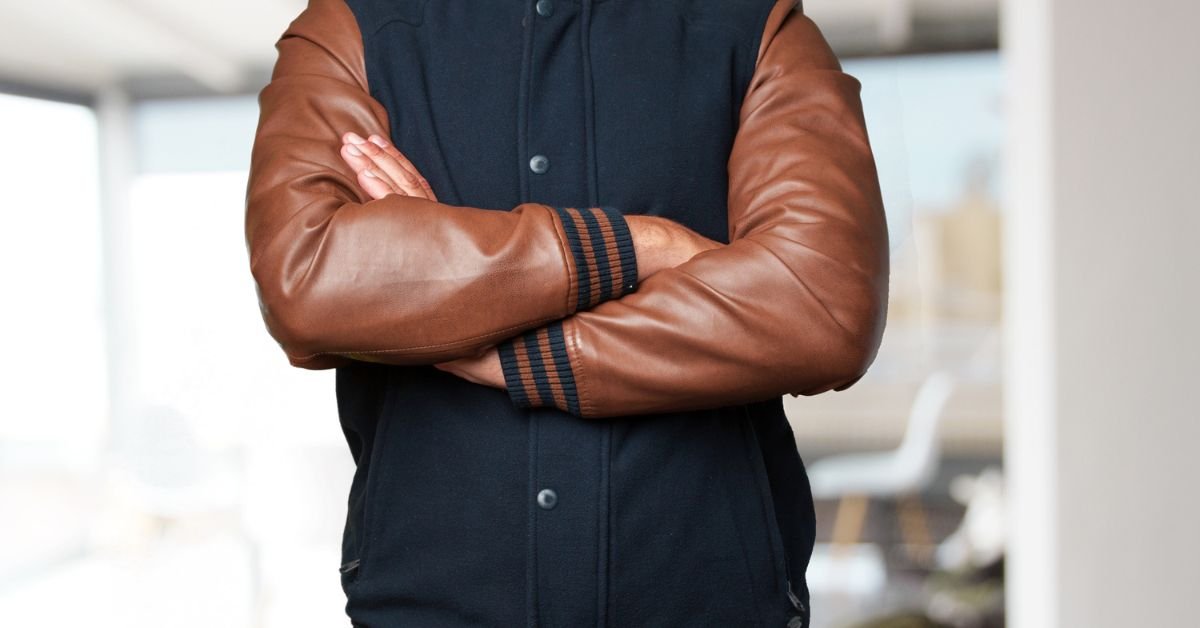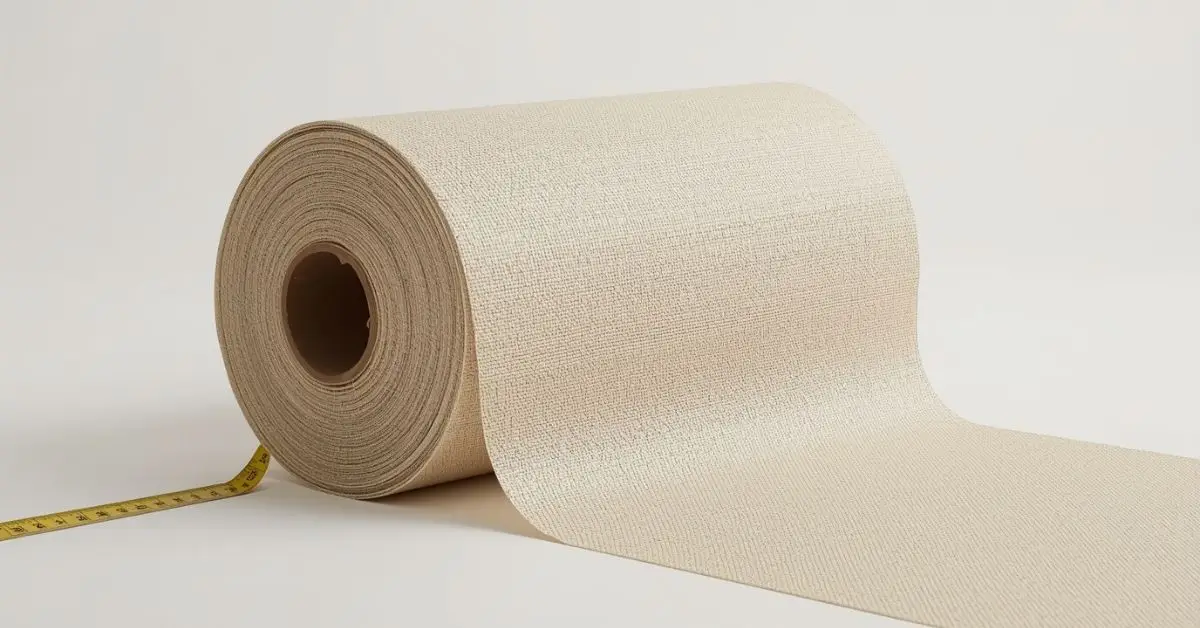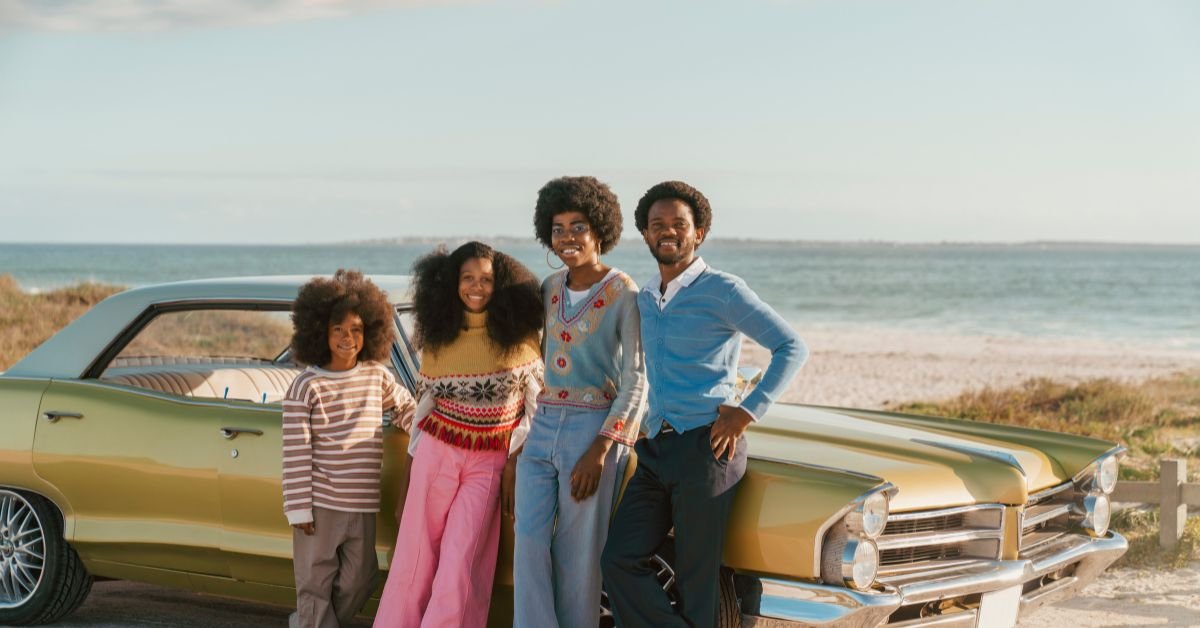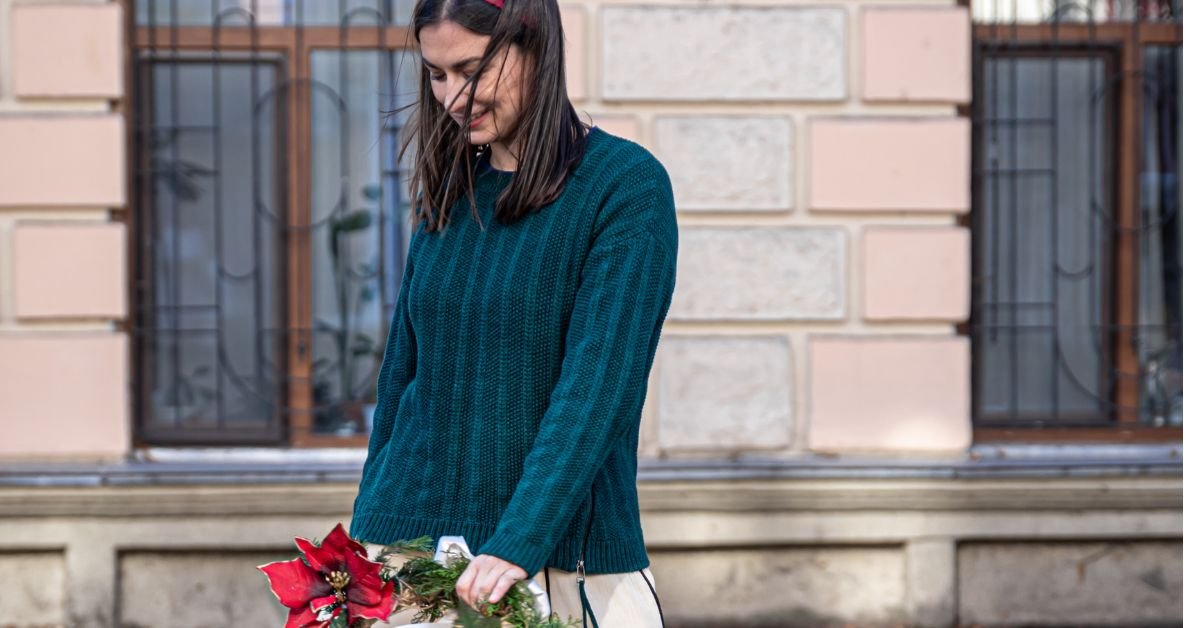FASHION
Brown vs Black: The Leather Jacket Face-Off

Introduction: Brown vs Black – The Ultimate Leather Jacket Dilemma
When it comes to iconic fashion staples, the leather jacket stands tall as a timeless classic. But even within this category, one major style debate divides enthusiasts—brown vs black: the leather jacket face-off. Both colors carry distinct moods, aesthetics, and cultural undertones, making the choice far more than just a preference. It’s a lifestyle statement. In this article, we’ll explore their style relevance, history, versatility, and what makes each of them shine—or fade—depending on the wearer and the occasion.
A Brief History of Leather Jackets in Fashion
Leather jackets have been cultural icons for decades, tracing back to World War I when aviators donned them for warmth and functionality. Fast forward to the 1950s, black leather jackets became symbols of rebellion, thanks to stars like Marlon Brando and James Dean. The brown leather jacket, on the other hand, was adopted by adventurers and intellectuals—think Indiana Jones or Ernest Hemingway. Each color evolved with its own set of connotations and loyalists, influencing how we perceive them today.
Styling a Black Leather Jacket: Edgy, Bold, and Urban
The black leather jacket is sleek, dominant, and effortlessly cool. Its association with rock culture, punk fashion, and biker gangs makes it a go-to for those who want to project confidence and attitude. Whether paired with distressed jeans, combat boots, or a crisp white tee, black exudes an urban, minimalistic appeal.
In modern streetwear and high fashion alike, the black leather jacket is a versatile layering piece. Fashion-forward influencers often match it with monochrome outfits or contrasting neutrals, enhancing its statement-making power.
Styling a Brown Leather Jacket: Warm, Earthy, and Sophisticated
On the flip side, the brown leather jacket brings warmth, depth, and a vintage edge. It complements rustic tones like olive, beige, cream, and burnt orange. Whether it’s a distressed bomber or a smooth café racer jacket, brown tones lend themselves to casual elegance and are ideal for daytime wear, outdoor events, or smart-casual environments.
Brown jackets offer a more approachable and grounded look compared to their black counterparts. For fashion enthusiasts who lean toward boho, heritage, or Americana styles, brown is a wardrobe essential.
Which Color Offers More Versatility?
While black may dominate in formal or nightlife settings, brown wins in transitional or daytime fashion. Brown leather easily adapts to seasonal palettes, especially in autumn and spring. Black leather, however, pairs seamlessly with winter wardrobes and darker aesthetics.
From a practical perspective, black hides scuffs and stains better, making it a low-maintenance choice. Brown leather, especially in lighter shades, tends to develop a patina over time, giving it a unique aged character that many find charming.
Cultural Associations and Personality Impact
Black jackets often suggest authority, mystery, and rebellion. Think of Neo from The Matrix or the menacing aura of a biker gang. Brown leather jackets evoke nostalgia, warmth, and adventure—characters like Indiana Jones wore it not just as a style piece, but as part of their identity.
What you wear often says something about who you are. A person wearing a black leather jacket may appear bold and assertive, while someone in a brown jacket might give off a classic, down-to-earth vibe.
Seasonal Suitability: Weathering the Style Storm
Black jackets are often associated with colder months, pairing well with wool scarves, dark denim, and winter boots. Brown jackets shine best in fall and spring, blending with earthy tones and lighter textures.
Leather Quality and Finish: More Than Just Color
Beyond the shade, the quality and type of leather also matter. Full-grain and top-grain leathers are considered premium regardless of color. Matte or distressed finishes tend to look better in brown, while shiny, polished finishes often suit black better.
Choosing between a suede brown and a glossy black jacket also introduces another layer of style nuance—texture. Suede softens your appearance and works well in brown, whereas polished black offers a sharper, cleaner silhouette.
Celebrity Inspiration: Who Wore It Best?
-
Black Leather Icons: Marlon Brando, Rihanna, David Beckham, Angelina Jolie
-
Brown Leather Legends: Brad Pitt (Fight Club), Chris Pratt (Jurassic World), Johnny Depp
These icons highlight how both colors have earned their place in fashion history—black for defiance, brown for rugged charm.
Decision-Making Guide: How to Choose Based on Your Style
Ask yourself:
-
Do I wear more cool tones or warm tones?
-
Is my fashion leaning more formal or casual?
-
Do I want a classic or an edgy vibe?
-
Am I investing in a timeless piece or a trend-forward look?
Ultimately, your personal wardrobe, lifestyle, and aesthetic goals will determine which jacket deserves a place in your closet.
FAQs: Brown vs Black Leather Jacket
Q1: Can I wear a brown leather jacket with black shoes or belt?
Yes, but try to incorporate a bridging element like a neutral or complementary shirt to balance the contrast.
Q2: Which is more timeless, brown or black leather jacket?
Black is often seen as more classic due to its association with formalwear and cinematic history. However, brown jackets age beautifully and offer longevity through their evolving patina.
Q3: Are brown leather jackets more casual than black?
Generally, yes. Brown tends to project a relaxed vibe, making it suitable for casual and smart-casual attire.
Q4: How do I maintain the shine or texture of a leather jacket?
Use a leather conditioner, store it away from direct sunlight, and avoid water exposure. Each finish—matte, glossy, or suede—has specific care needs.
Q5: Can I wear both in the same wardrobe?
Absolutely! Having both allows you to switch moods and match different occasions or outfits more effectively.
Conclusion: Brown vs Black – There’s No One Winner, Only Style Fit
At the end of the day, brown vs black: the leather jacket face-off isn’t about which color is superior—it’s about which one fits you better. Black reigns in minimalist and modern closets, while brown brings character and warmth. Both are iconic, both are powerful, and both deserve their place depending on your personal flair.
If you’re just starting your leather jacket journey, pick the one that complements your everyday palette and speaks to your inner story. Or better yet—own both, and never have to choose again.

FASHION
Top Benefits of Using Fiberglass HT52H Cloth

At its core, fiberglass HT52H is a specialty insulation fabric produced under the FLXGLAS HT line by AVS Industries (or its licensing/manufacturing partners). It falls under the category of treated fiberglass fabric HT series, meaning the base fiberglass cloth is given an additional inorganic treatment to allow it to withstand continuous high-temperature exposure.
In practical terms, the fabric is engineered to deliver performance far beyond standard fiberglass, making it ideal for challenging heat, flexing, or movement.
Key Specifications & Features of HT52H
Let’s dive into the technical side of this material—what makes the HT52H fiberglass satin weave fabric tick, and how its specifications compare to typical fabrics.
Width, Weight & Construction
- Standard widths: 38 inches and 60 inches for the roll.
- Roll length: Typically around 50 yards per roll for certain widths.
- Fabric weight: ~ 52 oz per square yard.
- Thickness: ~ 0.055 inches.
- Weave type: Satin weave (which helps flexibility + surface smoothness)—hence “HT52H fiberglass satin weave”.
Temperature Capability
One of the standout claims of this material:
- Continuous operating temperature up to ~ 1200 °F (≈ 649 °C) under the right conditions.
- That puts it significantly above standard fiberglass cloth, which typically caps around ~800°F depending on treatment.
Material Treatment & Function
This is more than just raw fiberglass: it’s a premium grade fiberglass cloth HT52H treated with a proprietary inorganic coating. The treatment improves heat resistance, reduces degradation under thermal cycling, and enhances safety in industrial contexts.
Because it’s labeled “inorganic treated fiberglass fabric HT series”, you get the benefits of fiberglass (lightweight, formable) combined with more robust heat tolerance.
Why Choose HT52H Over Standard Fiberglass?
Let’s shift tone to friendly-expert: you’ve likely used some fiberglass cloth before and seen limitations. Here’s what HT52H brings to the table—and what you should watch out for.
Advantages
- High-temperature resilience: The ability to withstand continuous heat up to around 1200°F means fewer replacements, fewer failures, and less downtime.
- Flexible and formable: The satin weave gives you flexibility for wrapping around pipes, ducts, joints. Many high temp fabrics are too rigid or brittle.
- Reduced maintenance: In industrial settings, extra toughness in insulation means lower maintenance cost and fewer surprises.
- Versatility across industries: From petrochemical to power generation, from welding safety to EV battery thermal management. The spec sheets call it out.
Limitations / Things to Consider
- Cost premium: Compared to standard fiberglass cloth (e.g., plain weave untreated), you’ll pay more for the heat-treatment and advanced properties.
- Chemical exposures: While heat resistance is high, exposure to aggressive chemicals, continuous abrasion or extreme flexing may still degrade it—so evaluate your exact environment.
- Edge sealing & handling: Higher performance fabrics often require better finishing (edge treatment, correct fastening) to avoid fraying or mechanical stress failures.
- Beyond spec abuse: Even though continuous use up to ~1200°F is stated, pushing beyond that or doing repeated extreme thermal cycling without margin will shorten lifespan. Always design with some safety buffer.
Real-Life Example: HT52H in Action
Here’s a small anecdote:
“We wrapped the new exhaust manifold with the HT52H fiberglass cloth 60-inch roll. Three months in, the plant readings show the barrier stayed within safe temps and our downtime dropped by ~30% compared to last year’s insulation blanket. If we’d used standard cloth, I’m sure we’d be replacing it now.”
This quote from a maintenance supervisor highlights how fiberglass fabric for continuous high temperature applications like expansion joints, pipe insulation, or exhaust covers make a tangible difference.
Where & How to Use HT52H — Application Guide
Let’s explore practical use-cases, selection tips, installation best practices, and the niche industries that benefit most.
Application Areas
- Removable insulation blankets & covers: Using HT52H means blankets stay effective longer under high heat.
- Expansion joints, tube seals, ducts: The combination of flexibility + thermal stability makes it suitable for dynamic systems.
- Welding curtains, safety screens: Heat protection for personnel or equipment in cutting/welding zones.
- Automotive / Marine exhaust & turbo systems: High temp zones in vehicles where weight and space matter.
- Oil, gas, petrochemical, power generation: Industrial settings with high continuous heat loads.
Selection Criteria
When choosing HT52H fiberglass fabric, you’ll want to ask:
- What is the continuous temperature in application? If it’s routinely above ~500-600 °C, you’re in HT52H territory.
- What width do you need? The material comes in 38″ or 60 in width common in large wrap applications.
- How much mechanical stress (flexing, vibration) do you expect? The satin weave helps but you’ll still need to factor motion.
- What additional coatings or layers are needed? Sometimes you may coat or laminate depending on corrosion or environment.
- Are edge finishes, fastening systems, installation tolerances specified? Ensuring proper installation maximizes lifespan.
Installation Best Practices
- Always handle like a high-performance insulating textile: protect edges, avoid sharp corners, and allow for expansion.
- Pre-cut and bind the edges if necessary to prevent fraying.
- Ensure proper overlap, secure fastening (clips, stitches, rivets) that can handle heat.
- Inspect regularly in first 3-6 months; monitor for discoloration, brittleness, or mechanical wear.
- For retrofit: compare older fabric lifespan vs expected savings using HT52H—it can pay off through fewer replacements.
Industries That Benefit
- Power Generation & Turbines: High heat, long service intervals, need for reliability.
- Oil & Gas / Petrochemical: Insulation of high-temp piping, flanges, exhaust stacks.
- Automotive / Marine: Lightweight high-temp wrap applications.
- Defense / Aerospace: Where weight, temperature, and flexibility combine.
- EV / Battery Thermal Management: Emerging area; thermal protection for battery packs, high energy systems.
Comparison Snapshot: HT52H vs Other Options
Here’s a quick comparison table to help you assess:
| Feature | Standard Fiberglass Cloth | HT52H Fiberglass Cloth |
|---|---|---|
| Continuous Temp Limit | ~800°F (427°C) typical | Up to ~1200°F (649°C) under correct conditions |
| Weave / Flexibility | Plain or twill, moderate flex | Satin weave, enhanced flexibility and surface smoothness |
| Treatment | Untreated or minor finishing | Proprietary inorganic treatment, premium grade fabric HT series |
| Application Suitability | Light duty, lower temp wraps | Heavy duty, continuous high-temp insulation textiles |
| Cost | Lower | Higher—but higher value in long-term reliability |
| Industry Use | General insulation, hobby composites | Industrial insulation textile, high temp industrial fabric |
Risks & What to Beware Of
While treated fiberglass fabric HT series like HT52H are powerful, you should still approach with a critical expert mindset.
- Temperature creep: Even rated for ~1200°F, local hotspots, radiant heat or poor airflow can push hot spots beyond rating. Design conservatively.
- Chemical or UV attack: Although robust, extreme chemical environments or prolonged UV exposure may degrade coating/treatment.
- Mechanical wear: Flexing, vibration and abrasion over time—always inspect joints, edges, and fasteners.
- Installation mis-match: If you mix this fabric with lower-temp components, mismatch can sacrifice performance.
- Supply & specification accuracy: Verify you’re ordering exactly HT52H fiberglass cloth 60-inch roll or width required; vendor spec sheets matter.
How to Read the HT52H Specification (Material Data Sheet)
Understanding the HT52H fiberglass material data sheet is key to choosing and specifying correctly.
- Continuous Operating Temperature: Look for the number—1200°F is a key claim.
- Roll Width / Length: 38” or 60” widths, 50-yard typical length on roll.
- Fabric Weight & Thickness: Example: 52 oz/sq yd & 0.055″ thickness. These help you compare mechanical strength.
- Weave Type / Construction: Satin weave, which means better drapability and surface for coatings.
- Treatment Info: Inorganic treated fabric (thus “inorganic treated fiberglass fabric HT series”). This distinguishes from conventional fiberglass.
- Application Notes / Certifications: Data may list industries (oil & gas, aerospace) and other relevant approvals.
- Limitations / Notes: Some datasheets will mention precautions, such as “ensure proper edge finishing” or “avoid exposure to corrosive chemicals”.
Future Trends & Why HT52H Matters in 2025
Let’s adopt a curious tone: why are materials like fiberglass HT52H gaining more traction now, and what does that mean for you?
- As industries push efficiency, machines run hotter, energy systems get compacted, and thermal management becomes more challenging. That raises demand for fabrics that don’t fade under heat.
- Emerging sectors like EV thermal management, renewable energy, battery modules, and retrofit of older industrial plants are driving need for reliable high-temp textile solutions. The spec sheets for HT52H even mention “EV Battery Thermal Management”.
- Supply chain pressures mean materials must last longer and require fewer replacements. Choosing a premium fabric like HT52H pays off in lifecycle cost.
- Innovation in coatings and hybrid fabrics (fiberglass + ceramic, fiberglass + coating) means the “treated fiberglass fabric HT series” category is evolving. If you specify HT52H today, you’ll benefit from mature tech.
- Sustainability drives: less waste, longer service life, value over “just the cheapest material”. A higher-grade fabric aligns with that principle.
Practical Buyer & Engineer Guide: Specifying HT52H in Your Project
Here’s an engineer-friendly checklist for specifying HT52H fiberglass industrial insulation textile:
- Define the temperature duty cycle: maximum continuous temp, peaks, number of cycles.
- Select roll width: For large surface area, 60 in width may reduce seams (HT52H fiberglass cloth 60 in width).
- Choose the weave type: Satin weave gives flexibility and fewer voids in wrap applications.
- Choose attachment/fastening system: how will fabric be fixed—clips, rivets, sewing, adhesive? Consider movement.
- Consider secondary coatings: Do you need aluminized facing, foil lamination, or outer protective layer?
- Order sample and test: Request a sample of the “AVS FLXGLAS HT treated fiberglass fabric” and perform your own environmental test if possible.
- Specify edge treatment: Fuse or bind edges to prevent fraying in high-motion or high-abrasion zones.
- Ensure supplier provides MDS/SDS sheets, and document installation and maintenance guidelines.
- Clarify replacement interval and maintenance inspection schedule: one of the gains of HT52H is reduction in unexpected replacements.
- Document cost-benefit: Show how fewer replacements, less downtime, and higher reliability offset higher upfront cost.
Summary: Is HT52H Right for Your Project?
If you’re dealing with applications that push fabrics into high-heat territory—wrapping hot pipes, protecting expansion joints, insulating exhaust systems, or designing removable covers—then yes, the premium grade fiberglass cloth HT52H is a strong candidate.
But if your environment only sees moderate temperatures (say 300-400°C) and low flex/movement, then you might be able to save cost with a less extreme fabric—though you’ll trade off lifespan or margin.
In 2025, with efficiency, reliability, and sustainability front of mind, investing in high-temp fabrics like HT52H makes smart sense for forward-looking engineering teams.
FAQ’s
A: Fiberglass HT52H is a treated, satin weave fiberglass fabric engineered for continuous high-temperature use (up to about 1200°F/649°C under spec). Conventional fiberglass fabrics generally handle lower temperatures and may lack the inorganic treatment that improves durability, strength and lifespan.
A: The fabric is commonly available in widths of 38″ and 60″; for large-area wraps or blankets, the 60-inch width reduces seams and simplifies installation.
A: Yes — that’s exactly its purpose. As a fiberglass fabric for continuous high temperature applications, HT52H is designed for industrial insulation textile use in power generation, oil & gas, heavy machinery and similar sectors.
Conclusion
If your equipment, system or project is exposed to high or continuous heat—and you’re still relying on standard insulation fabrics—it’s time to upgrade. Explore more about AVS FLXGLAS HT treated fiberglass fabric and request a sample of HT52H today. Don’t wait until the next failure or downtime signals you made the wrong material choice. Try HT52H now and make high-temperature reliability your standard
FASHION
Soul Style: Defining 1960s African American Fashion

Soul Style Fashion was a vibrant expression of identity, heritage, and resistance. Against a backdrop of civil rights activism and the Black Power movement, African Americans reimagined their style from conk‑treated hair and Eurocentric beauty norms toward bold Afrocentric attire, natural hair, dashikis, and kente patterns. Designers like Arthur McGee and the AfriCOBRA collective helped shape a visual language rooted in Black pride.
Context & Culture: Civil Rights Meets Style
In the early 1960s, as the civil rights movement advanced, fashion became a vehicle for dignity and respectability. Tailored slim‑cut suits for men, polished sheath and A‑line dresses for women, gloves, hats, and pearls all served as sartorial statements of equality and professionalism—part of the carefully curated image that African Americans presented during protests and public appearances This “Sunday best” aesthetic intentionally countered stereotypes and asserted humanity through clothing
Afrocentrism and the Black Is Beautiful Movement Soul Style
By the mid‑1960s, the “Black Is Beautiful” movement had exploded into fashion. Spearheaded by Harlem photographer Kwame Brathwaite’s 1962 Naturally ’62 show featuring Grandassa Models, it foregrounded African-inspired garments, natural afros, headwraps, and bold jewelry—celebrating textures, darker skin tones, and cultural heritage
Afrocentric Trends: Garments & Patterns
Dashikis, printed tunics, and kente cloth became staples. These loose-fitting, vividly patterned pieces were worn by both activists and fashion-forward individuals to express Pan‑African identity and solidarity
Style Icons: Models, Musicians & Designers
Influential figures helped define and broadcast these trends:
-
Donyale Luna, the first Black model on Vogue in 1966, shattered beauty standards and opened doors for models like Naomi Sims, Bethann Hardison, and Cicely Tyson .
-
Diana Ross and The Supremes showcased glamorous, coordinated gowns and tailored ensembles that blended elegance with Motown’s modern charisma
-
Aretha Franklin, with her natural hair, bold makeup, and sequined performance wear, became a fashion muse of soul music, embodying Black pride and feminine strength .
-
Designer Arthur McGee was the first African American to head a fashion studio on Seventh Avenue and integrated African fabrics and looser silhouettes into ready‑to‑wear and couture, dressing clients like Lena Horne and Cicely Tyson in the process .
Accessories & Grooming: Symbols of Resistance
Accessories were not afterthoughts—they were part of the message. Chunky beaded necklaces, oversized earrings, Afro‑pick combs shaped like raised fists, and African headwraps signaled solidarity and pride
Men often sported fedoras, leather gloves, narrow ties, and suede jackets, while women embraced go‑go boots, kitten heels, turbans, and cat‑eye sunglasses to complete their mod and Afrocentric looks
From Protest to Pop Culture: Fashion’s Legacy
The Black Panther Party’s signature ensemble—black leather jackets, berets, pants, and black tees—emerged later in the decade as militant fashion, merging political identity with visual coherence and style This aesthetic was echoed in streetwear and protest attire as a symbol of unity, discipline, and defiance.
Evolution of Hairstyles: From Conk to Afro to Natural Soul Style
As the decade progressed, natural Afros and short cropped textures replaced these processes, forming a clear visual link between style and political consciousness. By the late 1960s, the Afro had become an iconic emblem of Black autonomy and self‑love
Cultural Influences: Music, Art & Identity
Fashion in the 1960s Black community wasn’t isolated—music and art fueled it. The Black Arts Movement, jazz, soul, and emerging funk amplified Afrocentric visuals, inspiring designers and everyday wear alike .
Brands and designers of African-American heritage, along with grassroots fashion exhibitions and model collectives, cultivated a self‑determined visual identity. Publications like Essence emerged as important platforms when mainstream media failed to reflect Black beauty .
Conclusion
It was a political aesthetic, a cultural assertion, and a community-driven reclaiming of identity. The vestiges of that era remain visible in modern trends: in music videos, fashion runways, streetwear, and activism. This decade forged an enduring legacy of style that intertwined aesthetics, identity, resistance, and beauty.
Frequently Asked Questions (FAQs)
What inspired African American fashion trends in the 1960s?
The civil rights and Black Power movements, Afrocentric activism, cultural pride, and influential creatives like Kwame Brathwaite and AfriCOBRA drove fashion toward a fusion of politics and aesthetics.
Which garments became iconic symbols of Black identity?
Dashikis, kaftans, kente‑printed tunics, and tailored suits reimagined through African-inspired patterns served as powerful visual symbols of heritage and resistance.
Who were major Black designers and models of the era?
Arthur McGee, Ann Lowe, Stephen Burrows, Donyale Luna, Naomi Sims, and Bethann Hardison reshaped representation in the fashion industry.
How did hairstyles reflect social change?
Moving from chemically straightened conks to natural Afros, braids, and cornrows represented a shift toward embracing Black hair textures as political and identity affirmations.
How did music and art influence fashion?
Icons like Aretha Franklin, Diana Ross, Sly Stone, and movements like the Black Arts Movement introduced fashion aesthetics aligned with Black cultural expression and joy.
FASHION
American Colonial Fashion: Threads of Identity

American colonial fashion tells a fascinating story of identity, culture, and politics woven through the fabrics and styles worn during the 17th and 18th centuries. Far beyond mere clothing, these garments symbolized social status, political allegiance, and regional differences in a growing new nation. From the homespun wool of patriot households to the ornate silk gowns favored by the wealthy elite, the attire of colonial America reflected a vibrant blend of practicality, European influence, and emerging American values.
The Foundations of Colonial Attire: Materials and Style
In the American colonies, clothing was more than personal adornment—it was an outward signifier of wealth, class, and political stance. Garments were typically crafted from locally produced materials such as homespun wool or linen, especially among rural families who valued durability and function. Homespun fabric became especially significant during the pre-Revolutionary period, as it was championed in the famous Homespun Movement, encouraging colonists to boycott British imports and wear clothing made from American-grown fibers.
Women’s colonial dress was characterized by several layers, each serving a distinct purpose. The first layer was the shift, a simple linen or cotton underdress worn next to the skin. Over this, stays—an early form of the corset—helped shape the torso into the fashionable silhouette of the time. Women often wore multiple petticoats to add volume and warmth, with some affluent women incorporating hooped petticoats or panniers for dramatic flair.
Women’s Fashion: Layers of Meaning and Modesty
The complexity of women’s colonial clothing went beyond aesthetics; it represented societal expectations surrounding femininity and modesty. The stays, for instance, were not merely decorative but enforced posture and propriety, reflecting the era’s ideals about a woman’s comportment. Women’s lace aprons and kerchiefs added both function and style, protecting the outer garments while also serving as fashionable accents.
The robe à la française, with its distinctive pleated back, was popular among wealthier women who could afford imported silks and intricate embroidery. Meanwhile, middle- and lower-class women often wore simpler, homespun dresses reflecting practicality and patriotism.
Children’s clothing mirrored adult styles but adapted for mobility and growth, with young girls wearing miniature stays and boys donning breeches and waistcoats. Clothing was thus a marker not only of gender but of the wearer’s stage in life.
Men’s Attire: Between Formality and Frontier
Colonial men’s clothing balanced elegance with the demands of a largely agrarian and frontier lifestyle. While urban gentlemen donned tailored waistcoats and frock coats made from fine fabrics, many colonial men dressed in simpler garments suited for manual labor. The tricorne hat was a ubiquitous accessory among men of means, its three-cornered design serving both practical and symbolic purposes.
Footwear such as stockings and buckle shoes completed the formal look, though everyday wear often prioritized comfort and durability over style.
Political Expression Through Dress: The Homespun Movement
The Homespun Movement emerged as a form of protest against British taxation and trade restrictions, encouraging colonists to boycott imported textiles and embrace locally made fabrics. Wearing homespun garments became a patriotic act, a visual declaration of support for independence.
This political symbolism extended to accessories as well. The choice of fabric, color, and style often conveyed subtle messages about loyalty, resistance, and social status.
Regional Variations and Social Stratification
American colonial fashion was not uniform but varied significantly across regions and social classes. In urban centers like Boston and Philadelphia, wealthier colonists wore luxurious silks, velvets, and lace imported from Europe, while rural communities relied heavily on homespun wool and linen. Southern colonies, with their plantation economies, exhibited fashions influenced by Baroque and Rococo styles, reflecting the wealth of the plantation elite.
The Legacy of Colonial Fashion Today
The threads of colonial fashion continue to influence contemporary culture and identity. Historic reenactments, museums, and fashion collections preserve and celebrate the artistry and symbolism of these garments. Institutions like Colonial Williamsburg offer detailed insights into the craftsmanship and cultural significance of 18th-century attire.
Modern designers occasionally draw inspiration from colonial styles, incorporating elements like waistcoats, frock coats, and lace trims into neoclassical and vintage-inspired collections. Beyond aesthetics, the colonial period’s emphasis on local production and sustainable fabrics resonates wtoday’s eco-conscious movements.
FAQs about American Colonial Fashion
Q1: What materials were commonly used in colonial American clothing?
>>>>>>Colonial clothing was primarily made from wool, linen, and cotton, with homespun fabrics being particularly important for rural families and political symbolism during the Homespun Movement. Wealthier individuals sometimes wore imported silks and velvets.
Q2: How did women’s colonial clothing differ from men’s?
Women wore multiple layers, including the shift, stays, petticoats, and gowns such as the robe à la française. Men’s fashion centered around breeches, waistcoats, frock coats, and tricorne hats, with a focus on both practicality and formal elegance.
Q3: What was the Homespun Movement?
>>>>>>The Homespun Movement was a colonial protest encouraging the wearing of locally produced textiles to resist British imports, thus symbolizing patriotism and support for American independence.
Q4: Why were powdered wigs popular among colonial men?
Powdered wigs, borrowed from European fashion, signified wealth, social status, and professionalism, especially among politicians, lawyers, and affluent gentlemen.
Q5: How did colonial fashion vary by region?
Urban centers had access to luxurious imported fabrics and elaborate styles, while rural areas favored practical, homespun garments. The Southern colonies often exhibited more ornate Baroque and Rococo influences.
Conclusion
American colonial fashion was more than just apparel; it was a rich tapestry of cultural identity, social signaling, and political expression. Through the layers of stays and petticoats, the cut of waistcoats, and the texture of homespun fabric, the colonists told stories about who they were and what they stood for. Today, these threads of identity remain woven into the fabric of American heritage, reminding us of the complex interplay between style, society, and self-expression in the nation’s formative years.
-

 BLOG4 months ago
BLOG4 months agoShocking Gasp GIFs – Top 9 Picks
-

 TECH5 months ago
TECH5 months agoQuick Guide: How to Easily Reset Your Acer Laptop
-

 ENTERTAINMENT4 months ago
ENTERTAINMENT4 months agoTwitter Rate Limit Exceeded: What It Means and How to Fix It Fast
-

 BLOG2 months ago
BLOG2 months agoIs Recurbate Safe for Users or a Hidden Risk?
-

 BLOG5 months ago
BLOG5 months agoUnmasking the Risks: AI Face Swap in NSFW Content
-

 BLOG5 months ago
BLOG5 months agoMark Spaeny: Tailoring Success and Raising a Star
-

 BLOG5 months ago
BLOG5 months agoRagdoll Archers Unblocked: Chaos in Every Shot
-

 BUSINESS4 months ago
BUSINESS4 months agoBudget Connect: The Smartest Business Phone Service for Less



